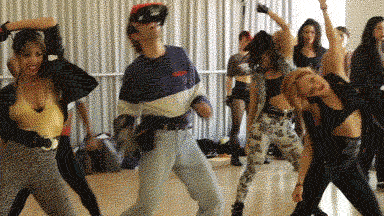(I originally made this post in late 2018 in whatever Smash Bros speculation thread was then current. After seeing it again, I wanted to post this again as a thread, so I just expnded on it.)
First off, I have to say that it was a disappointment that we never got Super Scope games on the Virtual Console. We got Zapper games way too late so it's not really surprising, but I think Super Scope games would have benefit more from being on the Wii for two reasons. One, I think the few games Nintendo made for the controller are more substantial than most Zapper games. Two, the Super Scope itself was kind of ass, and so the games should be significantly improved just by using the Wiimote.
The nice thing about the Super Scope is that it had more than just a fire button, so it allowed for more complexity than the Zapper. It's more of a proper controller in that sense. But the buttons are arranged across the handle and top of the controller, which I guess is supposed to make it feel like you're using a real bazooka, which leads to the question of who the hell thought that a bazooka would make a good game controller. It's gigantic. Also, the thing needed six batteries, and it ate through them like a bag of potato chips.
For some reason, the Super Scope also had a turbofire switch, which means that the developers would design the game to screw you out of relying on it. It's such a weird decision. That might be why the Super Scope in Smash Bros has both a rapid fire and charge shot function; I don't know if it's specifically based on Battle Clash but it's in line with the solution used in that game.
Looking at the Nintendo games - except Tinstar, because I barely remember that it exists.
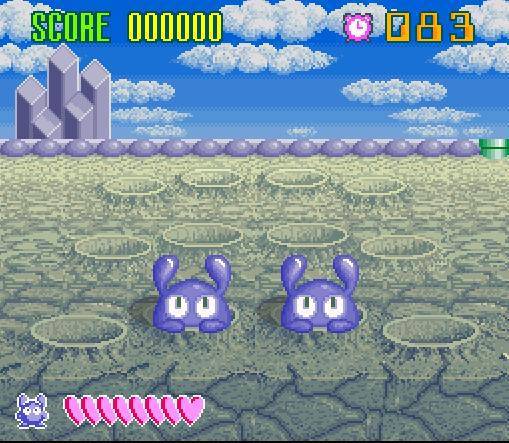
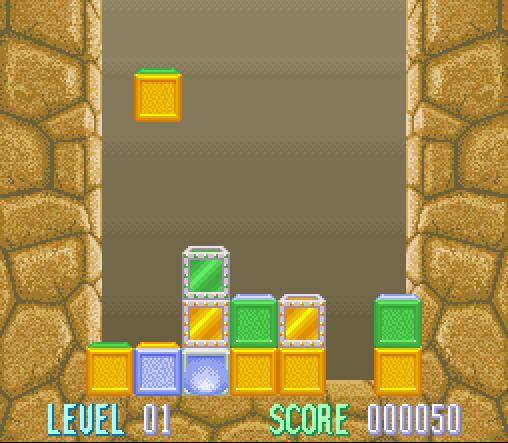

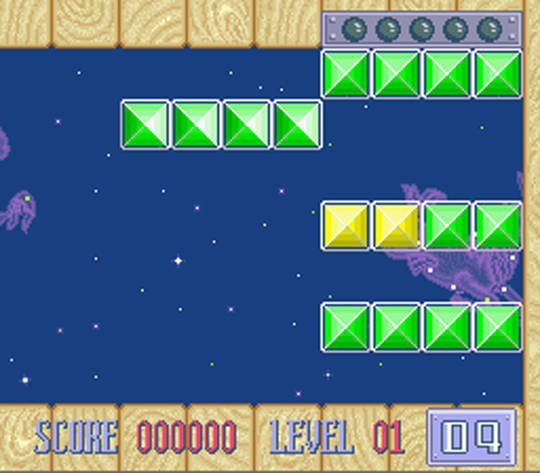
Super Scope 6
This is a minigame collection, and ultimately comes across as a tech demo. There are high scores for the six games, but there isn't a ton of depth or progression to make replays exciting. When you start up, you have to pick between two main sections. Laser Blazer is loosely sci-fi themed and has you shooting down enemies. Blastris is somehow exactly what it sounds like, although there's also an unrelated game called Mole Patrol stuffed in there.
Laser Blazer is probably the one I gravitated to the most as a kid because it's the one that seems to have some purpose behind it. You're in a futuristic hovertank thing and you're fighting aliens or something, that's like the plot of a proper video game, right? But in retrospect they're the most blasé games in the package. Enemies pop out and you have to shoot them down before they kill you. Maybe there's depth perception making it harder to lead the target or there's some Mode7. Wowee.
Of the Laser Blazer games, Confront and Engage aren't hugely different. In one, your tank is moving forward and attack enemies from behind, but in the other you're stationary and they're coming at you. Intercept's a little different because you're not being attacked; missiles are flying across the screen and you shoot them. There's also a little Mario cameo where he flies across while chased by one of the Koopalings - the manual says it's Bowser, but I'm pretty sure it's Lemmy - and you can either save him for bonus points or shoot him for a penalty.
By the way, Mario's got the red cross on his plane, so this would probably have to be edited in a hypothetical re-release.
I don't think Laser Blazer has an actual story, but it looks like it does. Your hovertank is actually shown in-game and in the manual from various angles, and in the menu screens you have about unnamed anime women that appear and occasionally salute you. They look like the the bridge operators you might see in an older sci-fi anime, where the women would generally be relegated to pink collar work. You could imagine that maybe you're a pilot for some sort of futuristic military organization and you're at war with aliens or robots, but I don't think it even defines any of that.
Mole Patrol feels like the most Duck Hunt-like game. It's not any more complex or creative than the rest, but it at least tries to add some charm. It's just whack-a-mole with a light gun, but between rounds you see the moles snickering and parading to a warp pipe to take them underground. They don't look anything like actual moles - the manual actually calls them "Molians" - and they have different colours and facial expressions depending on their speed.
I feel like the two Blastris games might be the most daring of Nintendo's classic light gun games in that shooting things down isn't the goal. They're puzzle games where you shoot the falling blocks instead of controlling them directly.
Blastris Type A is almost straight up Tetris. All of the standard Tetris blocks are falling to the right, and you have to make a target number of vertical lines, which will clear themselves when you make them. However, you can't spin or move the blocks. Instead, while they're falling, you can shoot out individual squares to break them up or remove them. Type B is like a match-3 game where individual blocks fall down and you can shot them to rotate the colours.



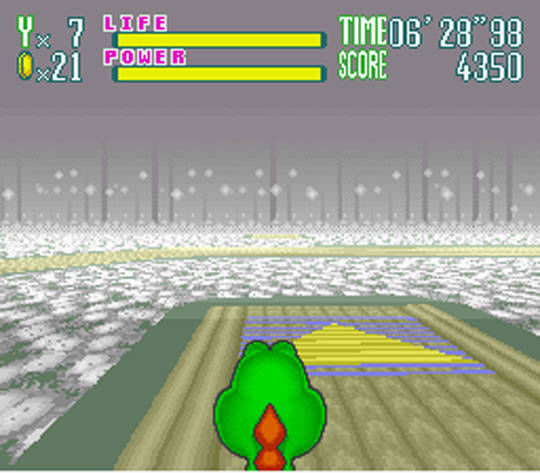
Yoshi's Safari
This is the Super Scope game that feels more like a proper console title. You go through levels shooting down enemies and minibosses, then fight a bigger boss when you reach the end. It's still basically about shooting stuff the whole time, but there's some gameplay variety within that, and it feels like the most robust package.
The game presents itself almost like a remake of Super Mario World; it's got the same aesthetic and I think it even has some reused or redrawn sprites, but the details of the gameplay are definitely inspired by it. You've got a jump button during the stages for some light platforming, you can store a powerup which can used during the boss. There are also some alternate paths you can take by shooting gates in a level.
As a bit of trivia, I believe that this is the first English localization to refer to Princess Peach instead of Princess Toadstool, a few years before Mario 64 did it. She doesn't get kidnapped this time though; the story's a slight variation on the Mario standard. It's the prince and king of Jewelry Land who Bowser kidnaps. Peach simply asks Mario to save them as they're friends of hers and Mario does it as a favour.
Whereas secret hard modes were fairly common to Super Scope games, the one in Yoshi's Safari actually frames itself as a second quest where Bowser kidnaps the king and prince of Jewelery Land again. The colour scheme of the map also changes, which makes me suspect that it was inspired by the Halloween / autumn secret mode in Super Mario World.
While most of the enemies are as you've seen them in the Mario platformers, the bosses generally have big mechs where you have to find the weak point to do any damage. You start off against the Koopalings, but the last few before Bowser are actually just powerful Mario enemies: Magikoopa, Big Boo, and Chargin' Chuck.
One neat feature of the game is the coop, where one player controls Mario with the Super Scope and the other controls Yoshi with a normal SNES pad. Yoshi does the jumping and maybe some dodging; you can move much more than you can with just one player.
I mentioned that Super Scope games tended to compensate for the use of the turbofire switch. In this case, while you don't have limited ammo, you have a regenerating power meter that drains as you shoot, and you can't fire while it's empty. As it charges very quickly, I don't think there's much risk if you're not just holding down the turbofire all the time. Either you turn it off or use short bursts.
Another piece of trivia, you can give your a game over by shooting Yoshi repeatedly in the back of the head. Yoshi gives you a disappointed look when you do. You can even give yourself a game over by doing this. It probably lends to the social dynamic of couch coop, where the Mario player gets to punish the Yoshi player for saying stupid things.
Yoshio Sakamoto worked on this game before Super Metroid, but it's hard to find too much information about that.
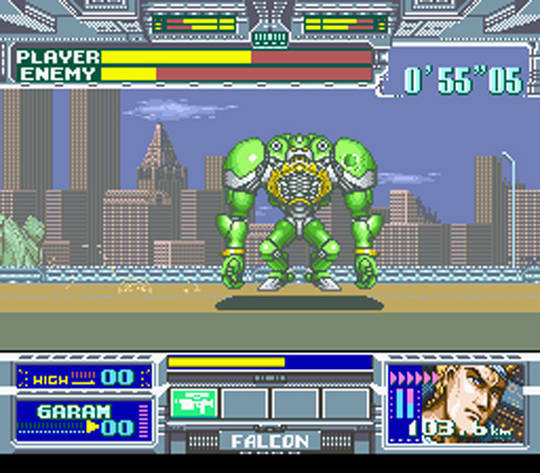
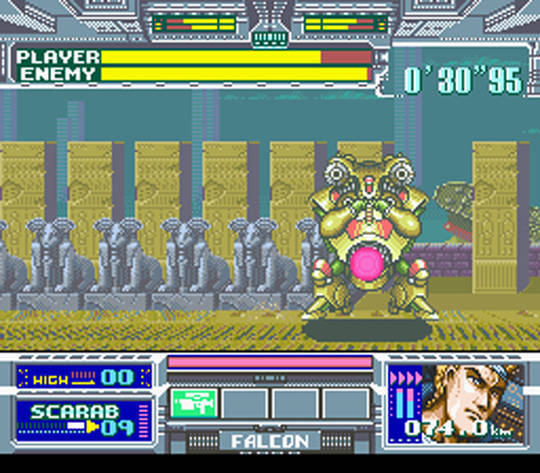


Battle Clash
I feel that Battle Clash was built like an arcade title, even if it was never intended to be one. Both visually and in gameplay, it seems like it's meant to be more of a constant adrenaline rush that you'll want to play through multiple times. Like how sometimes the enemy will suddenly swerve in the other direction and the camera will take a few moments to settle again; there's little purpose but to make you feel like you're actually in a high speed battle.
Basically, the game is a boss rush where you fight one-on-one gun duels against an enemy mech. The enemies are generally huge and fairly easy to hit, but the tension comes from having to play offense and defense simultaneously. The enemies have a fairly wide range of attacks, as well as their own weak points and special abilities. For example, the ST Scarab is largely covered in impenetrable armour and the ST Lorca can reattach its limbs after they're blasted off. You also get one-use powerups and weapons from defeating enemies, which you can select from with your second button.
Again, the game deals with the existence of the turbo button, although it's more of a carrot approach than Yoshi's Safari's stick. When you aren't firing, your gun automatically charges up a much more powerful shot. Your regular shot does little damage but is effective at countering most of the opponent' bullets. Sometimes opponents will launch more powerful shots that need a charge attack, and sometimes those attacks can cone suddenly, so the game encourages you to resist the urge to spam your fire. The best use of turbo fire is to defend against enemies firing volley of missiles.
One of the more distinctive features of this game is that enemies' individual parts take damage as well as their main life meter. I feel lie this was meant to introduce a layer of the complexity to the battle which encourages replay; that arcade-like aspect. You can find the weak spot and try to eliminate an opponent as quickly as possible, and the time trial mode encourages that. But you can also play sadistically, tearing your opponent down piece by piece.
The soundtracks for game and its sequel are by Yuka Tsujiyoko, who did a lot of the music for Intelligent Systems games of the period, including most of the early Fire Emblem series. She was apparently a sound supervisor for Three Houses and did some remixes for the Smash Bros series, including Edge of Adversity and Yuuyuuki Medley for Ultimate.
I think the story and influences of the game are also pretty interesting to look at. It's one of the few Nintendo games that is explicitly post-apocalyptic; your first sight in the story mode is the demolished Statue of Liberty. According to the game's backstory, climate change and natural disasters led to a total breakdown of human society, regressing us from nations to tribes. The gladiator-like mech battles you engage in during the game are how the leaders in this society gain and vie for power, and were originally fought with tanks - old military equipment seems to be left for scavengers. The final boss is an alien who has taken over the world, but the way things are worded, it seems like he wandered in and took power legitimately in the way that this new world order handles things.
Carlos, the closest thing the main character has to a mirror match, is pretty clearly inspired by Gundam's Char Aznable; he's a blonde guy in a mask and a red military uniform who seems to quickly develop a personal grudge against the hero. Both of their names are even derived from versions of the name Charles. But there's actually not a whole lot of Gundam influence aside from that; the only other thing that jumps out at me is that humans in the setting lack faster-than-light travel, and are only spacefaring insofar as that they've colonized the moon.
Instead, I suspect that it's actually most heavily inspired by the words of other Sunrise real robot series, specifically the works of Ryousuke Takahashi. Whereas Gundam largely focused on governments and proper military organizations, Takahashi's anime tend to involve paramilitary groups where individuals have more responsibility for their own equipment; Battle Clash is closer to the latter, where Standing Tanks are the pilot's property and represents their personal power. The player's mech, the ST Falcon, has the faceless, stocky, potbellied look of the Scopedog from Armored Trooper Votoms in the first game. The high speed and inertia we see on the camera in-game fits in with the Scopedog's skating movement as opposed to a robot that simply walks and runs. Its head shape is more along the lines of the Dougram from Fang of the Sun Dougram, and in the later game it gains more resemblance through a more heroic humanoid frame and shoulder cannon. There's also a powerup called the V-System which also allows the ST Falcon to fly through space in the second game, which may be inspired by the V-Max system from Blue Comet SPT Layzner.
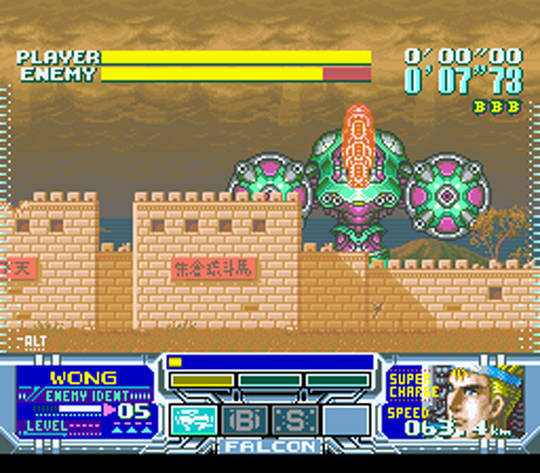
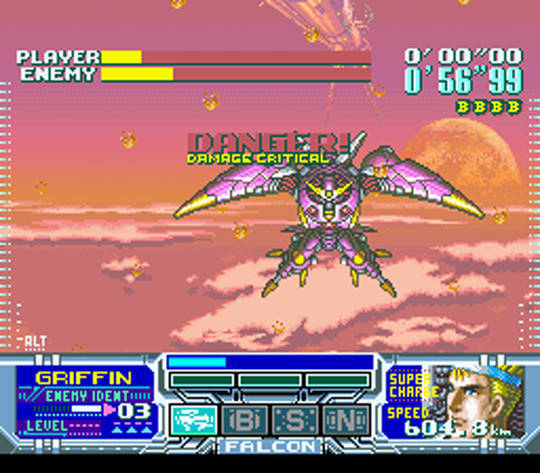
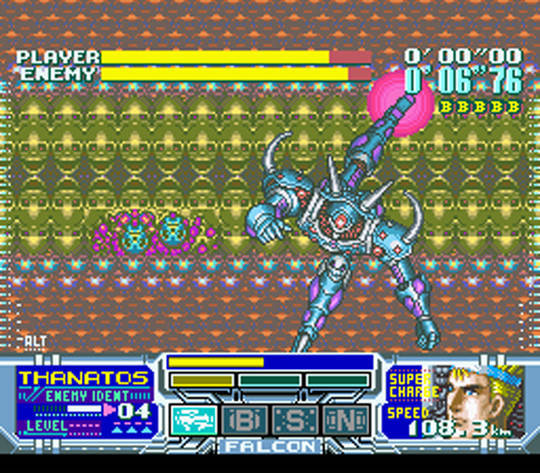

Metal Combat: Falcon's Revenge
It's a shame that Metal Combat didn't release in Japan, because it's a huge improvement on Battle Clash. It's a little longer, adds to the combat mechanics, adds another unlockable character, and even adds a versus mode.
The main new feature of the game's combat is that the player's gun now reaches higher levels of charge. At the third and highest level, a charge shot is not only more powerful, but exposes the enemy's weak point and causes them to flinch.
The ST Tornado, which is unlocked via a code, was originally the second player in Battle Clash's time trial mode. It has a different charge mechanic geared to high risk and reward. It has ten charge stocks, and can either use them individually to rapid fire weak charge shots or drain them all for one extremely powerful shot. The first few stocks charge quickly but the last few charge much more slowly. The Tornado also has weak defense as a further risk.
As for the versus mode, it's an interesting inclusion, because it's got a lot of the same issues as including a versus mode in Punch Out. The perspective isn't built for it, and the characters are designed for a single player to overcome interesting opponents, not for even fights. The game doesn't do anything special for it; one player uses the Super Scope as normal, while the other player takes control of one of the enemy mechs with the Super Nintendo controller. They move with the D-pad and use the buttons or combos of buttons to unleash various attacks. It's gimmicky, but unique.
I think special mention deserves to go to the ST Griffin as a particularly memorable opponent. Battle Clash had a battle where you and the opponent jump off a cliff and battle in midair. In Metal Combat, the St Griffin is similar, except you're actually jumping off of the orbital elevator that connects the Earth to the Moon. Instead of hitting the ground and continuing the battle from there, if you take too long here, you begin to burn up from atmospheric reentry.
The game even boasts the use of 3D rendering, but as opposed to Donkey Kong Country, it doesn't seem like the models were turned to sprites directly. As such, it doesn't look too different from Battle Clash in terms of style despite having much more detailed designs. The use of Photoshop is also mentioned on the official website.
As far as I've seen, the Japanese stereotypes of American tastes are often gristly, ugly, and hyper-violent. As such, I think it's interesting that this game comes across as more cheerful and even a bit sillier than its predecessor. After you and Mike Anderson saved the post-apocalyptic world in the ST Falcon, it actually seems to have ushered in the beginnings of a new age. Our training stage is a ruined city, but our first level proper isn't. We return to New York for a rematch with Guido and his upgraded Garam, but the highway is no longer cracked and the Statue of Liberty is standing once more. In fact, the modern skyscrapers have been replaced by more futuristic-looking ones. As for the extraterrestrial enemies you fight, they include a sniveling husband and his domineering wife.
Perhaps in line with the games being made for multiple playthroughs, there are actually a couple of ending variations. In the final battle, the boss captures your ally, Rola, and uses her ST Spika as a shield. By careful shooting, you're able to defeat the boss without destroying her. Additionally, if you fail during this boss fight, your copilot Mike Anderson - the main character of the games - will sacrifice himself to give you another chance.
As another bit of trivia, one of the enemies in the game is an eyepatch-wearing alien named Danpe. This is probably a reference to the eye-patch wearing boxing coach Danpei Tange from the classic manga Ashita no Joe. This is actual part of a minor trend found in Nintendo games of the time. Pokemon has a character who gives you advise at the beginning of each gym who is internally referred to as Danpei, and originally may have worn an eyepatch. Zelda also has the minor recurring character of Dampé the gravedigger, whose hunchback and noted ugly face are also signature traits of the character from Ashita no Joe.
That's all I have to say about the Super Scope. I'll conclude this OP with images grabbed primarily from manuals of the above games and official websites. Thank you for your time.
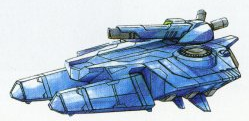








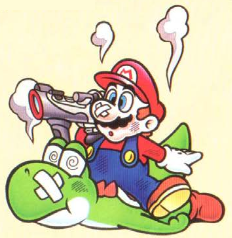
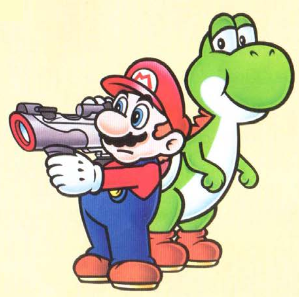
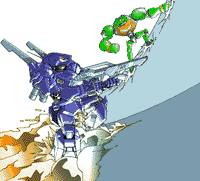
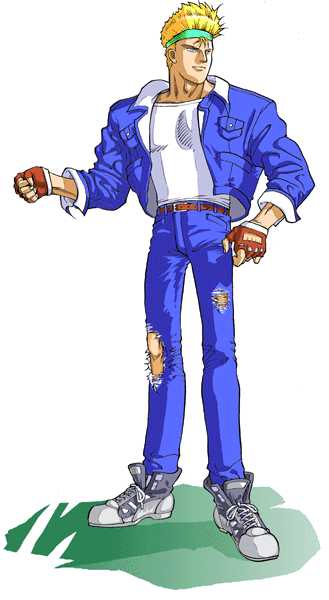


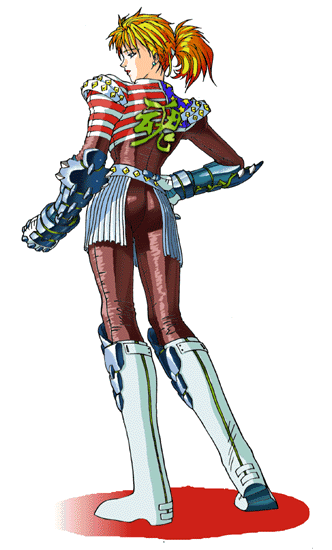
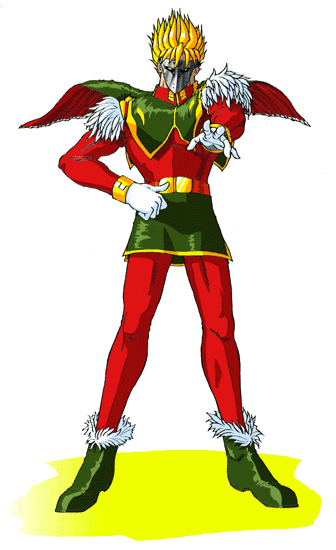


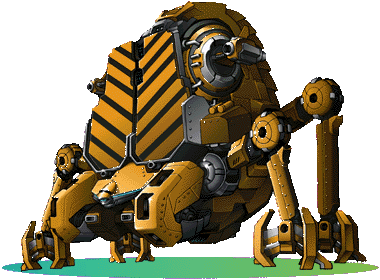


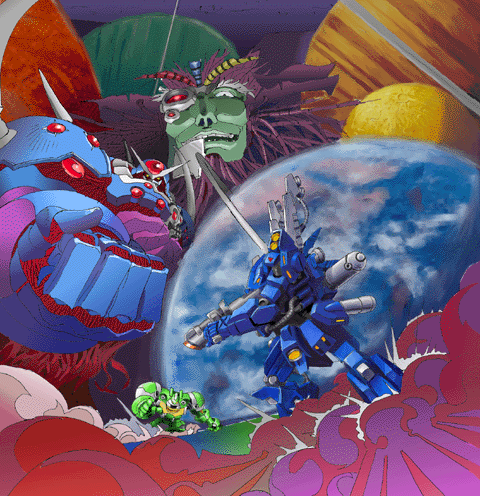
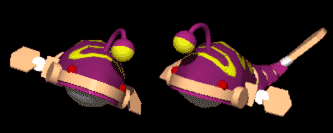
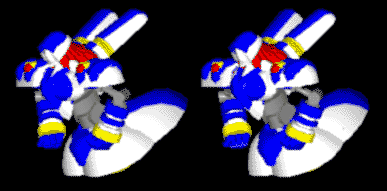
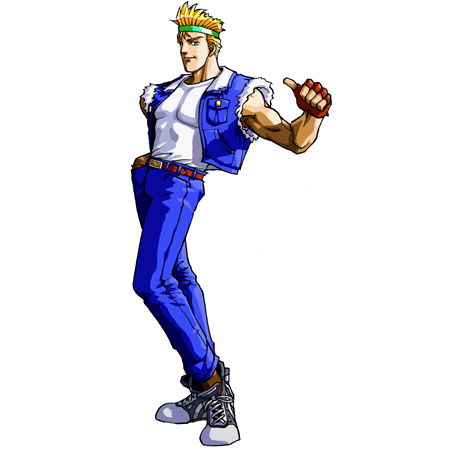



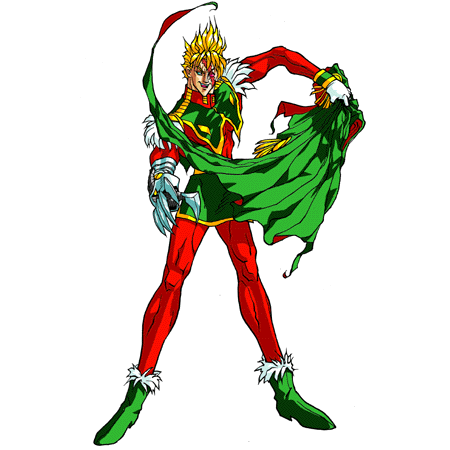

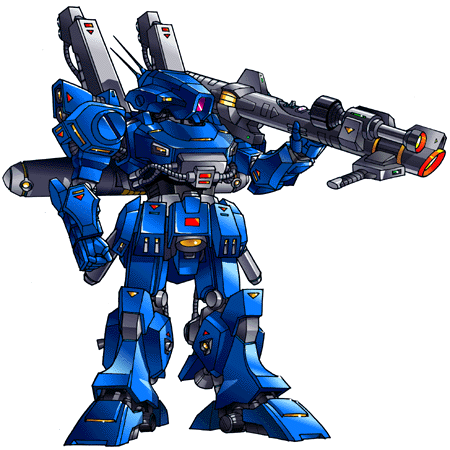


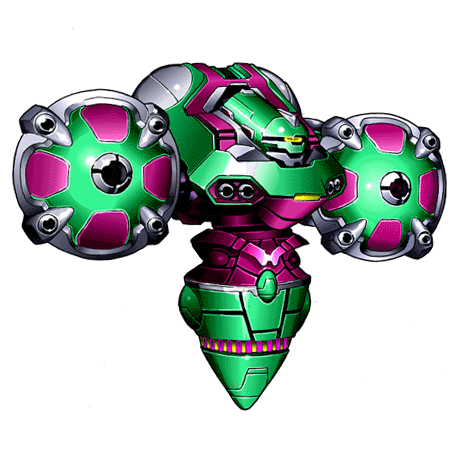
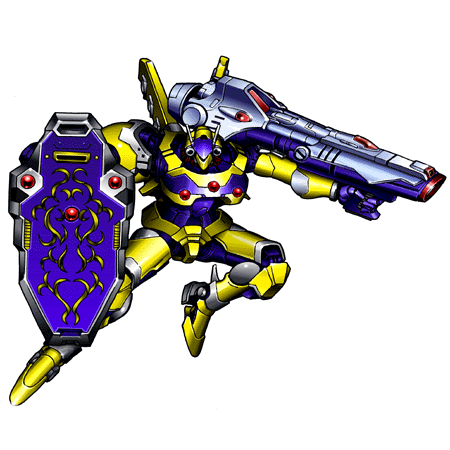

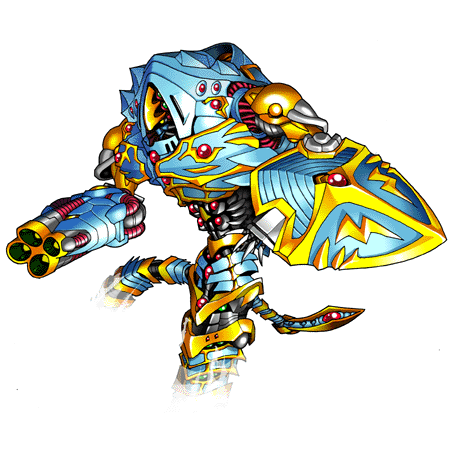
First off, I have to say that it was a disappointment that we never got Super Scope games on the Virtual Console. We got Zapper games way too late so it's not really surprising, but I think Super Scope games would have benefit more from being on the Wii for two reasons. One, I think the few games Nintendo made for the controller are more substantial than most Zapper games. Two, the Super Scope itself was kind of ass, and so the games should be significantly improved just by using the Wiimote.
The nice thing about the Super Scope is that it had more than just a fire button, so it allowed for more complexity than the Zapper. It's more of a proper controller in that sense. But the buttons are arranged across the handle and top of the controller, which I guess is supposed to make it feel like you're using a real bazooka, which leads to the question of who the hell thought that a bazooka would make a good game controller. It's gigantic. Also, the thing needed six batteries, and it ate through them like a bag of potato chips.
For some reason, the Super Scope also had a turbofire switch, which means that the developers would design the game to screw you out of relying on it. It's such a weird decision. That might be why the Super Scope in Smash Bros has both a rapid fire and charge shot function; I don't know if it's specifically based on Battle Clash but it's in line with the solution used in that game.
Looking at the Nintendo games - except Tinstar, because I barely remember that it exists.




Super Scope 6
This is a minigame collection, and ultimately comes across as a tech demo. There are high scores for the six games, but there isn't a ton of depth or progression to make replays exciting. When you start up, you have to pick between two main sections. Laser Blazer is loosely sci-fi themed and has you shooting down enemies. Blastris is somehow exactly what it sounds like, although there's also an unrelated game called Mole Patrol stuffed in there.
Laser Blazer is probably the one I gravitated to the most as a kid because it's the one that seems to have some purpose behind it. You're in a futuristic hovertank thing and you're fighting aliens or something, that's like the plot of a proper video game, right? But in retrospect they're the most blasé games in the package. Enemies pop out and you have to shoot them down before they kill you. Maybe there's depth perception making it harder to lead the target or there's some Mode7. Wowee.
Of the Laser Blazer games, Confront and Engage aren't hugely different. In one, your tank is moving forward and attack enemies from behind, but in the other you're stationary and they're coming at you. Intercept's a little different because you're not being attacked; missiles are flying across the screen and you shoot them. There's also a little Mario cameo where he flies across while chased by one of the Koopalings - the manual says it's Bowser, but I'm pretty sure it's Lemmy - and you can either save him for bonus points or shoot him for a penalty.
By the way, Mario's got the red cross on his plane, so this would probably have to be edited in a hypothetical re-release.
I don't think Laser Blazer has an actual story, but it looks like it does. Your hovertank is actually shown in-game and in the manual from various angles, and in the menu screens you have about unnamed anime women that appear and occasionally salute you. They look like the the bridge operators you might see in an older sci-fi anime, where the women would generally be relegated to pink collar work. You could imagine that maybe you're a pilot for some sort of futuristic military organization and you're at war with aliens or robots, but I don't think it even defines any of that.
Mole Patrol feels like the most Duck Hunt-like game. It's not any more complex or creative than the rest, but it at least tries to add some charm. It's just whack-a-mole with a light gun, but between rounds you see the moles snickering and parading to a warp pipe to take them underground. They don't look anything like actual moles - the manual actually calls them "Molians" - and they have different colours and facial expressions depending on their speed.
I feel like the two Blastris games might be the most daring of Nintendo's classic light gun games in that shooting things down isn't the goal. They're puzzle games where you shoot the falling blocks instead of controlling them directly.
Blastris Type A is almost straight up Tetris. All of the standard Tetris blocks are falling to the right, and you have to make a target number of vertical lines, which will clear themselves when you make them. However, you can't spin or move the blocks. Instead, while they're falling, you can shoot out individual squares to break them up or remove them. Type B is like a match-3 game where individual blocks fall down and you can shot them to rotate the colours.




Yoshi's Safari
This is the Super Scope game that feels more like a proper console title. You go through levels shooting down enemies and minibosses, then fight a bigger boss when you reach the end. It's still basically about shooting stuff the whole time, but there's some gameplay variety within that, and it feels like the most robust package.
The game presents itself almost like a remake of Super Mario World; it's got the same aesthetic and I think it even has some reused or redrawn sprites, but the details of the gameplay are definitely inspired by it. You've got a jump button during the stages for some light platforming, you can store a powerup which can used during the boss. There are also some alternate paths you can take by shooting gates in a level.
As a bit of trivia, I believe that this is the first English localization to refer to Princess Peach instead of Princess Toadstool, a few years before Mario 64 did it. She doesn't get kidnapped this time though; the story's a slight variation on the Mario standard. It's the prince and king of Jewelry Land who Bowser kidnaps. Peach simply asks Mario to save them as they're friends of hers and Mario does it as a favour.
Whereas secret hard modes were fairly common to Super Scope games, the one in Yoshi's Safari actually frames itself as a second quest where Bowser kidnaps the king and prince of Jewelery Land again. The colour scheme of the map also changes, which makes me suspect that it was inspired by the Halloween / autumn secret mode in Super Mario World.
While most of the enemies are as you've seen them in the Mario platformers, the bosses generally have big mechs where you have to find the weak point to do any damage. You start off against the Koopalings, but the last few before Bowser are actually just powerful Mario enemies: Magikoopa, Big Boo, and Chargin' Chuck.
One neat feature of the game is the coop, where one player controls Mario with the Super Scope and the other controls Yoshi with a normal SNES pad. Yoshi does the jumping and maybe some dodging; you can move much more than you can with just one player.
I mentioned that Super Scope games tended to compensate for the use of the turbofire switch. In this case, while you don't have limited ammo, you have a regenerating power meter that drains as you shoot, and you can't fire while it's empty. As it charges very quickly, I don't think there's much risk if you're not just holding down the turbofire all the time. Either you turn it off or use short bursts.
Another piece of trivia, you can give your a game over by shooting Yoshi repeatedly in the back of the head. Yoshi gives you a disappointed look when you do. You can even give yourself a game over by doing this. It probably lends to the social dynamic of couch coop, where the Mario player gets to punish the Yoshi player for saying stupid things.
Yoshio Sakamoto worked on this game before Super Metroid, but it's hard to find too much information about that.




Battle Clash
I feel that Battle Clash was built like an arcade title, even if it was never intended to be one. Both visually and in gameplay, it seems like it's meant to be more of a constant adrenaline rush that you'll want to play through multiple times. Like how sometimes the enemy will suddenly swerve in the other direction and the camera will take a few moments to settle again; there's little purpose but to make you feel like you're actually in a high speed battle.
Basically, the game is a boss rush where you fight one-on-one gun duels against an enemy mech. The enemies are generally huge and fairly easy to hit, but the tension comes from having to play offense and defense simultaneously. The enemies have a fairly wide range of attacks, as well as their own weak points and special abilities. For example, the ST Scarab is largely covered in impenetrable armour and the ST Lorca can reattach its limbs after they're blasted off. You also get one-use powerups and weapons from defeating enemies, which you can select from with your second button.
Again, the game deals with the existence of the turbo button, although it's more of a carrot approach than Yoshi's Safari's stick. When you aren't firing, your gun automatically charges up a much more powerful shot. Your regular shot does little damage but is effective at countering most of the opponent' bullets. Sometimes opponents will launch more powerful shots that need a charge attack, and sometimes those attacks can cone suddenly, so the game encourages you to resist the urge to spam your fire. The best use of turbo fire is to defend against enemies firing volley of missiles.
One of the more distinctive features of this game is that enemies' individual parts take damage as well as their main life meter. I feel lie this was meant to introduce a layer of the complexity to the battle which encourages replay; that arcade-like aspect. You can find the weak spot and try to eliminate an opponent as quickly as possible, and the time trial mode encourages that. But you can also play sadistically, tearing your opponent down piece by piece.
The soundtracks for game and its sequel are by Yuka Tsujiyoko, who did a lot of the music for Intelligent Systems games of the period, including most of the early Fire Emblem series. She was apparently a sound supervisor for Three Houses and did some remixes for the Smash Bros series, including Edge of Adversity and Yuuyuuki Medley for Ultimate.
I think the story and influences of the game are also pretty interesting to look at. It's one of the few Nintendo games that is explicitly post-apocalyptic; your first sight in the story mode is the demolished Statue of Liberty. According to the game's backstory, climate change and natural disasters led to a total breakdown of human society, regressing us from nations to tribes. The gladiator-like mech battles you engage in during the game are how the leaders in this society gain and vie for power, and were originally fought with tanks - old military equipment seems to be left for scavengers. The final boss is an alien who has taken over the world, but the way things are worded, it seems like he wandered in and took power legitimately in the way that this new world order handles things.
Carlos, the closest thing the main character has to a mirror match, is pretty clearly inspired by Gundam's Char Aznable; he's a blonde guy in a mask and a red military uniform who seems to quickly develop a personal grudge against the hero. Both of their names are even derived from versions of the name Charles. But there's actually not a whole lot of Gundam influence aside from that; the only other thing that jumps out at me is that humans in the setting lack faster-than-light travel, and are only spacefaring insofar as that they've colonized the moon.
Instead, I suspect that it's actually most heavily inspired by the words of other Sunrise real robot series, specifically the works of Ryousuke Takahashi. Whereas Gundam largely focused on governments and proper military organizations, Takahashi's anime tend to involve paramilitary groups where individuals have more responsibility for their own equipment; Battle Clash is closer to the latter, where Standing Tanks are the pilot's property and represents their personal power. The player's mech, the ST Falcon, has the faceless, stocky, potbellied look of the Scopedog from Armored Trooper Votoms in the first game. The high speed and inertia we see on the camera in-game fits in with the Scopedog's skating movement as opposed to a robot that simply walks and runs. Its head shape is more along the lines of the Dougram from Fang of the Sun Dougram, and in the later game it gains more resemblance through a more heroic humanoid frame and shoulder cannon. There's also a powerup called the V-System which also allows the ST Falcon to fly through space in the second game, which may be inspired by the V-Max system from Blue Comet SPT Layzner.




Metal Combat: Falcon's Revenge
It's a shame that Metal Combat didn't release in Japan, because it's a huge improvement on Battle Clash. It's a little longer, adds to the combat mechanics, adds another unlockable character, and even adds a versus mode.
The main new feature of the game's combat is that the player's gun now reaches higher levels of charge. At the third and highest level, a charge shot is not only more powerful, but exposes the enemy's weak point and causes them to flinch.
The ST Tornado, which is unlocked via a code, was originally the second player in Battle Clash's time trial mode. It has a different charge mechanic geared to high risk and reward. It has ten charge stocks, and can either use them individually to rapid fire weak charge shots or drain them all for one extremely powerful shot. The first few stocks charge quickly but the last few charge much more slowly. The Tornado also has weak defense as a further risk.
As for the versus mode, it's an interesting inclusion, because it's got a lot of the same issues as including a versus mode in Punch Out. The perspective isn't built for it, and the characters are designed for a single player to overcome interesting opponents, not for even fights. The game doesn't do anything special for it; one player uses the Super Scope as normal, while the other player takes control of one of the enemy mechs with the Super Nintendo controller. They move with the D-pad and use the buttons or combos of buttons to unleash various attacks. It's gimmicky, but unique.
I think special mention deserves to go to the ST Griffin as a particularly memorable opponent. Battle Clash had a battle where you and the opponent jump off a cliff and battle in midair. In Metal Combat, the St Griffin is similar, except you're actually jumping off of the orbital elevator that connects the Earth to the Moon. Instead of hitting the ground and continuing the battle from there, if you take too long here, you begin to burn up from atmospheric reentry.
The game even boasts the use of 3D rendering, but as opposed to Donkey Kong Country, it doesn't seem like the models were turned to sprites directly. As such, it doesn't look too different from Battle Clash in terms of style despite having much more detailed designs. The use of Photoshop is also mentioned on the official website.
As far as I've seen, the Japanese stereotypes of American tastes are often gristly, ugly, and hyper-violent. As such, I think it's interesting that this game comes across as more cheerful and even a bit sillier than its predecessor. After you and Mike Anderson saved the post-apocalyptic world in the ST Falcon, it actually seems to have ushered in the beginnings of a new age. Our training stage is a ruined city, but our first level proper isn't. We return to New York for a rematch with Guido and his upgraded Garam, but the highway is no longer cracked and the Statue of Liberty is standing once more. In fact, the modern skyscrapers have been replaced by more futuristic-looking ones. As for the extraterrestrial enemies you fight, they include a sniveling husband and his domineering wife.
Perhaps in line with the games being made for multiple playthroughs, there are actually a couple of ending variations. In the final battle, the boss captures your ally, Rola, and uses her ST Spika as a shield. By careful shooting, you're able to defeat the boss without destroying her. Additionally, if you fail during this boss fight, your copilot Mike Anderson - the main character of the games - will sacrifice himself to give you another chance.
As another bit of trivia, one of the enemies in the game is an eyepatch-wearing alien named Danpe. This is probably a reference to the eye-patch wearing boxing coach Danpei Tange from the classic manga Ashita no Joe. This is actual part of a minor trend found in Nintendo games of the time. Pokemon has a character who gives you advise at the beginning of each gym who is internally referred to as Danpei, and originally may have worn an eyepatch. Zelda also has the minor recurring character of Dampé the gravedigger, whose hunchback and noted ugly face are also signature traits of the character from Ashita no Joe.
That's all I have to say about the Super Scope. I'll conclude this OP with images grabbed primarily from manuals of the above games and official websites. Thank you for your time.








































